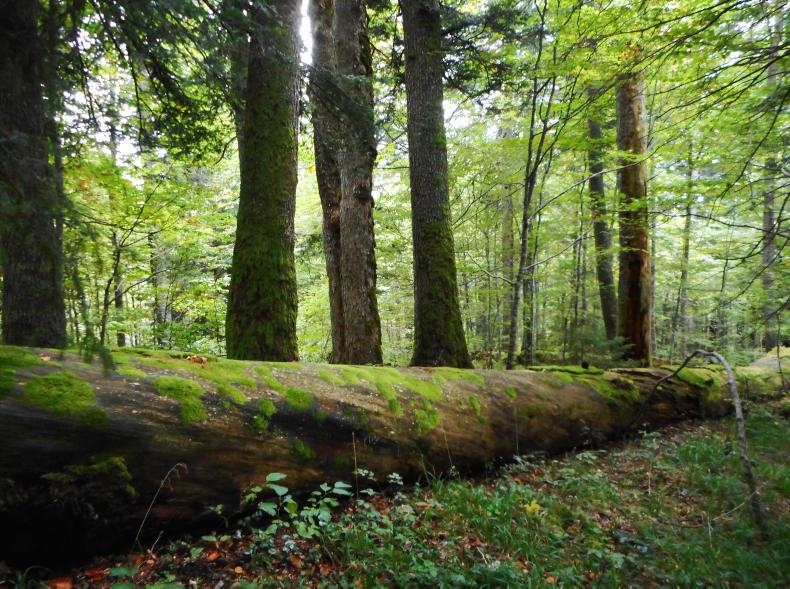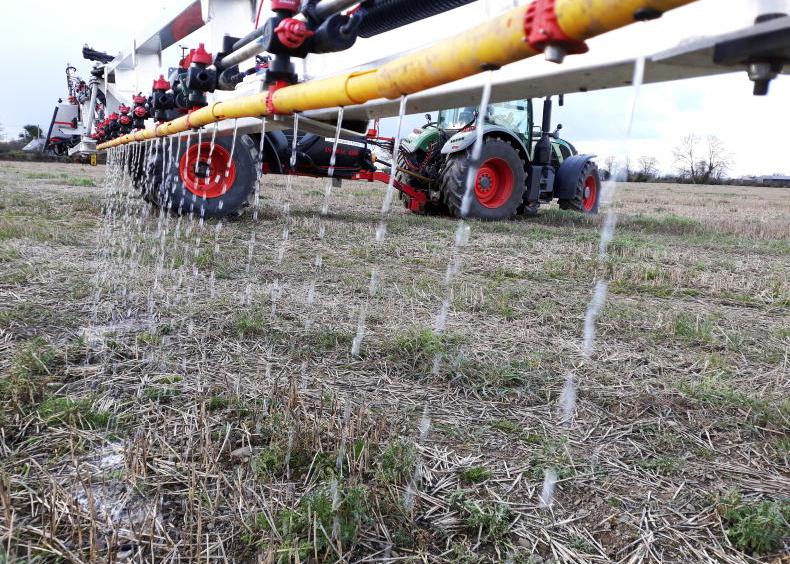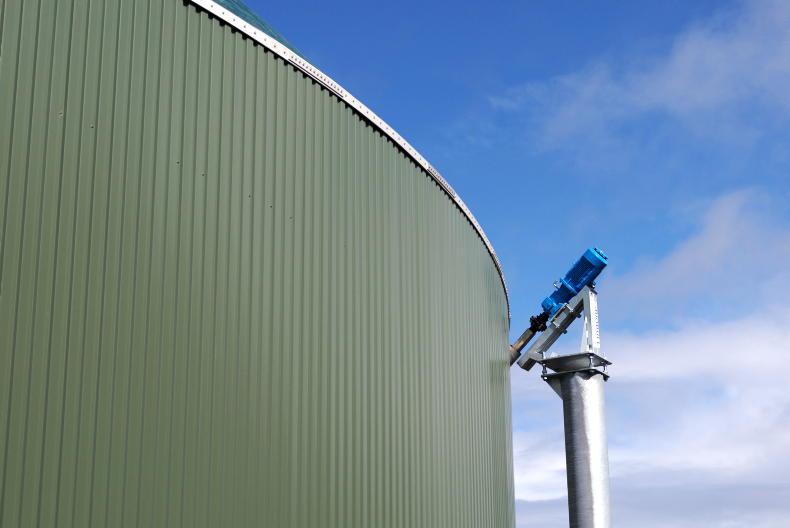While An Taoiseach was launching the first progress report of the review of the Climate Action Plan last Thursday in the National Botanic Gardens Visitor Centre, another event – under the same roof – demonstrated how wood could play a major role in climate change mitigation, as well as providing sustainable building solutions.
The seminar “Sustainable timber construction” explored engineered timber as a climate-friendly building solution.
Led by Professor Annette Harte, director of the Timber Engineering Research Group at NUI Galway and her two postdoctoral researchers Dr David Gil-Moreno and Dr Conan O Ceallaigh, the seminar demonstrated how cross laminated timber (CLT) could present major opportunities for Sitka spruce and other home grown softwoods in construction.
Organised in conjunction with the Wood Marketing Federation and the Society of Irish Foresters, the seminar illustrated the huge potential for building in CLT.
This is a multi-layer engineered wood product, where each layer of boards is placed cross-wise and bonded to form a solid rectangular-shaped timber panel. This can be prefabricated off-site as ready-to-use building components for large-scale construction projects.
The conference heard how CLT and other engineered wood products such as glulam are transforming medium to high-rise buildings in Europe.
Two buildings, now at the completion stage in Norway and Austria, are over 80m tall. These were erected quickly from locally sourced timber, so the CO2 footprint is considerably lower than conventional buildings.
The conference heard from Bryan Carroll of Punch Consulting Engineers that European CLT production has increased from 200,000m3 in 2008 to an expected 1.2 million m3 next year. While CLT usage is minimal in Ireland, Diane Harrington of Bucholz McEvoy Architects outlined how her practice had already built in CLT and had plans for more similar projects. Likewise, Mike Haslam of Haslam & Co Architects has completed a number of projects, with Solearth also exploring the potential of engineered wood.
So far, CLT in Ireland is imported, but NUIG researchers believe that home-grown Sitka spruce can provide the same benefits in Irish CLT construction. Sitka is mechanically graded to the required strength class, (C16) which is as good as Scandinavian C16.
Making information about CLT available to engineers and architects is an important part of the NUIG WoodProps programme, which is funded by the Department of Agriculture, Food and the Marine. This is being achieved by NUIG’s “Timber Information Resource Centre” which is “a source of scholarly and technical documents to inform architects, developers, engineers, product manufacturers and other industry stakeholders on aspects related to timber engineering and design”.
Forest owners explore broadleaved management in Wales
Irish forest owner groups have been exploring the silvicultural and marketing challenges facing forest owners with broadleaves.
A Hardwood Focus Group (HFG), established by members of Limerick Tipperary Woodland Owners Ltd, (LTWO) is sharing ideas on how best to develop intermediate hardwood markets, according to Jonathan Spazzi, Teagasc forestry adviser.
Many of these have carried out woodland improvements – tending and thinning – in their forests and are now managing their crops with a view to exploring added value markets. Apart from working with us in Teagasc, the HFG has also built up a relationship with GMIT Letterfrack, the National Centre for Excellence in Furniture Design and Technology.
The group recently visited Wales to look at their approach on how best to manage and market broadleaved woodlands. Supported by the Forest Service, the HFG plans to share their findings with other forest owner groups and organisations in Ireland.
The group met with Kenton Jones, who manufactures hardwood flooring products from small diameter logs, which previously might have been used for firewood.
They also visited Whitney Sawmills commercial hardwood specialists, where they spent three days undergoing training in log grading, sawmilling skills, including portable sawmilling and looked at options for narrow board production from small logs.
While the emphasis was on markets, the group visited three woodlands to examine management techniques, according to the principles of continuous cover forestry (CCF), where the importance of quality production was highlighted.
The study tour was extremely important in providing insights to hardwood growing and marketing. The Welsh representatives have arranged to travel to Ireland next year to attend a hardwood seminar, which will be open to other forest owner groups.
While An Taoiseach was launching the first progress report of the review of the Climate Action Plan last Thursday in the National Botanic Gardens Visitor Centre, another event – under the same roof – demonstrated how wood could play a major role in climate change mitigation, as well as providing sustainable building solutions.
The seminar “Sustainable timber construction” explored engineered timber as a climate-friendly building solution.
Led by Professor Annette Harte, director of the Timber Engineering Research Group at NUI Galway and her two postdoctoral researchers Dr David Gil-Moreno and Dr Conan O Ceallaigh, the seminar demonstrated how cross laminated timber (CLT) could present major opportunities for Sitka spruce and other home grown softwoods in construction.
Organised in conjunction with the Wood Marketing Federation and the Society of Irish Foresters, the seminar illustrated the huge potential for building in CLT.
This is a multi-layer engineered wood product, where each layer of boards is placed cross-wise and bonded to form a solid rectangular-shaped timber panel. This can be prefabricated off-site as ready-to-use building components for large-scale construction projects.
The conference heard how CLT and other engineered wood products such as glulam are transforming medium to high-rise buildings in Europe.
Two buildings, now at the completion stage in Norway and Austria, are over 80m tall. These were erected quickly from locally sourced timber, so the CO2 footprint is considerably lower than conventional buildings.
The conference heard from Bryan Carroll of Punch Consulting Engineers that European CLT production has increased from 200,000m3 in 2008 to an expected 1.2 million m3 next year. While CLT usage is minimal in Ireland, Diane Harrington of Bucholz McEvoy Architects outlined how her practice had already built in CLT and had plans for more similar projects. Likewise, Mike Haslam of Haslam & Co Architects has completed a number of projects, with Solearth also exploring the potential of engineered wood.
So far, CLT in Ireland is imported, but NUIG researchers believe that home-grown Sitka spruce can provide the same benefits in Irish CLT construction. Sitka is mechanically graded to the required strength class, (C16) which is as good as Scandinavian C16.
Making information about CLT available to engineers and architects is an important part of the NUIG WoodProps programme, which is funded by the Department of Agriculture, Food and the Marine. This is being achieved by NUIG’s “Timber Information Resource Centre” which is “a source of scholarly and technical documents to inform architects, developers, engineers, product manufacturers and other industry stakeholders on aspects related to timber engineering and design”.
Forest owners explore broadleaved management in Wales
Irish forest owner groups have been exploring the silvicultural and marketing challenges facing forest owners with broadleaves.
A Hardwood Focus Group (HFG), established by members of Limerick Tipperary Woodland Owners Ltd, (LTWO) is sharing ideas on how best to develop intermediate hardwood markets, according to Jonathan Spazzi, Teagasc forestry adviser.
Many of these have carried out woodland improvements – tending and thinning – in their forests and are now managing their crops with a view to exploring added value markets. Apart from working with us in Teagasc, the HFG has also built up a relationship with GMIT Letterfrack, the National Centre for Excellence in Furniture Design and Technology.
The group recently visited Wales to look at their approach on how best to manage and market broadleaved woodlands. Supported by the Forest Service, the HFG plans to share their findings with other forest owner groups and organisations in Ireland.
The group met with Kenton Jones, who manufactures hardwood flooring products from small diameter logs, which previously might have been used for firewood.
They also visited Whitney Sawmills commercial hardwood specialists, where they spent three days undergoing training in log grading, sawmilling skills, including portable sawmilling and looked at options for narrow board production from small logs.
While the emphasis was on markets, the group visited three woodlands to examine management techniques, according to the principles of continuous cover forestry (CCF), where the importance of quality production was highlighted.
The study tour was extremely important in providing insights to hardwood growing and marketing. The Welsh representatives have arranged to travel to Ireland next year to attend a hardwood seminar, which will be open to other forest owner groups.









SHARING OPTIONS